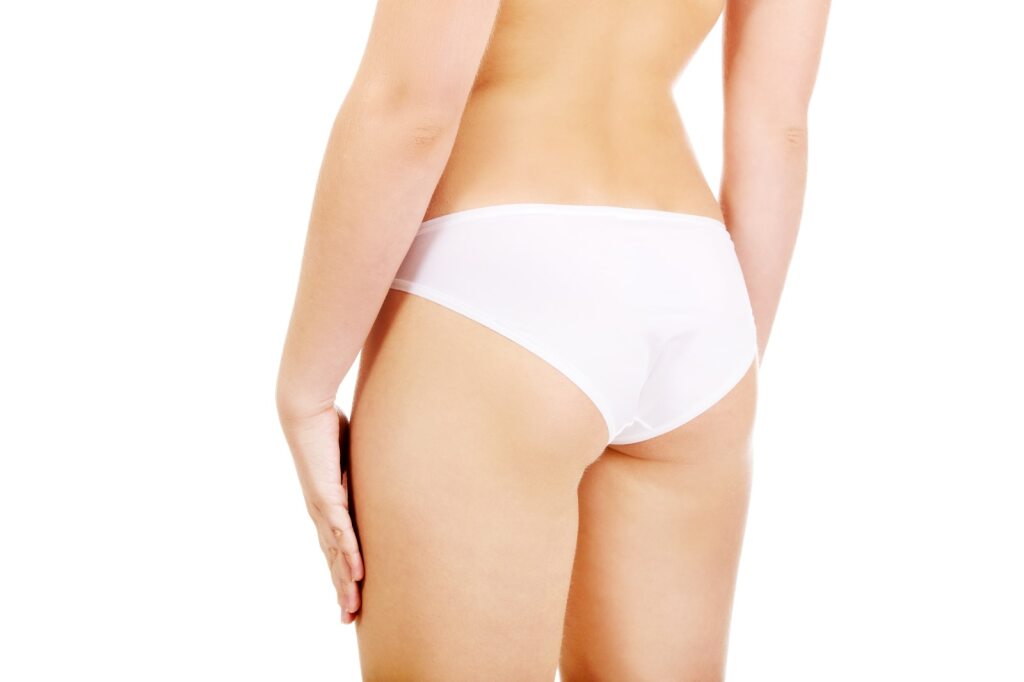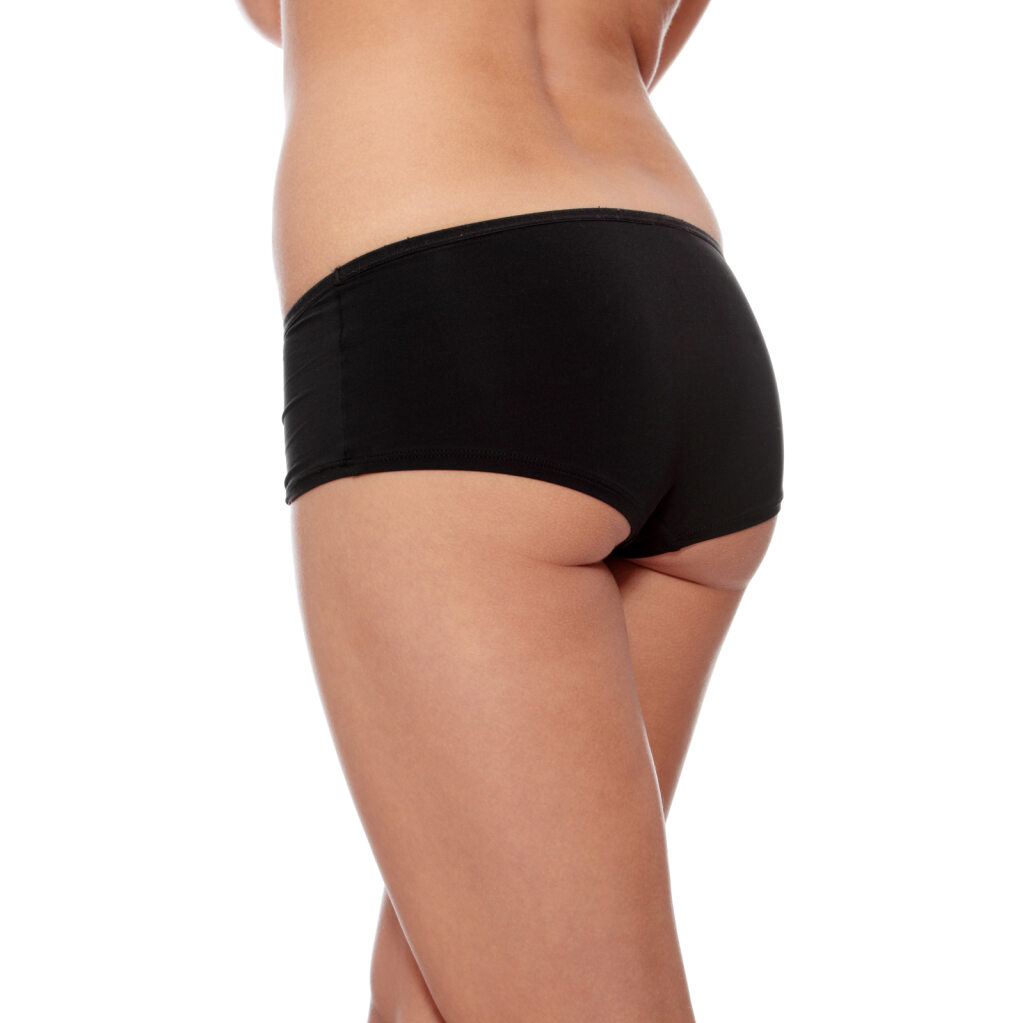Litteät pakarat

Moni haaveilee pyöreistä ja muotoilluista pakaroista, mutta todellisuus ei aina vastaa odotuksia. Litteät pakarat voivat vaikuttaa koko vartalon mittasuhteisiin sekä vaatevalintoihin heikentäen itsevarmuutta. Kun takapuoli on muodoton tai litteä, vartalo saattaa näyttää epätasapainoiselta ja huomio voi kohdistua muihin kehonosiin, kuten vatsaan tai reisiin.
Pakaralihakset kuuluvat kehon suurimpiin lihaksiin ja sen lisäksi, että ne vaikuttavat kehon estetiikkaan, ne toimivat myös merkittävinä tukilihaksina. Vahvat pakarat auttavat ehkäisemään polvi- ja selkävaivoja, sillä ne tukevat lantion ja alaselän toimintaa. Heikot pakarat voivat altistaa kehon virheasennoille, mikä voi johtaa kipuihin ja rasitusvammoihin. Siksi niiden vahvistaminen ei ole pelkästään ulkonäköön liittyvä tavoite, vaan myös toiminnallisesti tärkeää kehon hyvinvoinnille.
Pakaroiden muotoilu ja vahvistaminen voidaan saavuttaa oikeanlaisella harjoittelulla, ravinnolla sekä esteettisillä hoidoilla. Kaikki nämä keinot voivat auttaa sinua saavuttamaan pyöreämmät pakarat ja tukemaan niiden toimintaa.
Miksi pakarat ovat litteät?
Pakaroiden muotoon voivat vaikuttaa useat eri tekijät, kuten esimerkiksi:
- Pitkäaikainen istuminen: Nykyelämä on täynnä istumista, olipa kyseessä toimistotyö, autoilu tai sohvalla rentoutuminen. Pitkäaikainen istuminen heikentää pakaralihasten aktivaatiota, jolloin ne vähitellen menettävät kiinteyttä ja volyymia. Tätä ilmiötä kutsutaan "kuolleen pakaran syndroomaksi" eli tilaksi, jossa pakaralihakset eivät enää aktivoidu kunnolla edes kävellessä tai treenatessa.
- Treenivirheet: Moni treenaa pakaroitaan, mutta ilman oikeaa tekniikkaa tulokset voivat jäädä huomaamattomiksi. Kevyet painot ja vähäinen progressio voivat estää pakaralihasten kehittymistä. Lisäksi liian yksipuolinen harjoittelu, kuten pelkät kyykyt, ei välttämättä riitä aktivoimaan koko pakaralihasryhmää. Pakaroiden treeni vaatii progressiivista ylikuormitusta eli vastuksen ja toistojen asteittaista lisäämistä. Lisäksi monipuoliset liikkeet, kuten lantionnostot, pakarapotkut ja askelkyykyt, ovat avainasemassa tehokkaassa pakaroiden vahvistamisessa.
- Geneettinen rakenne: Geenit vaikuttavat siihen, miten rasva jakautuu kehossa sekä millainen lantion ja pakaroiden rakenne on. Ihmisillä, joilla on kapea lantio ja vähemmän lihasmassaa pakaroissa, voi olla haastavampaa saavuttaa pyöreät pakarat. Tämä tarkoittaa sitä, että pakaralihasten vahvistaminen ja täyteainehoidot voivat olla tehokkaita tapoja lisätä volyymia ja parantaa muotoa.
- Ikääntyminen: Ikääntyessä kehon lihasmassa vähenee luonnollisesti, ja tämä voi vaikuttaa myös pakaroiden muotoon. Sarkopenia eli ikääntymiseen liittyvä lihaskato, vähentää lihasten tilavuutta ja kiinteyttä, jolloin pakarat voivat litistyä ja menettää muotoaan. Lisäksi ihon kimmoisuus heikkenee iän myötä, mikä voi saada pakarat näyttämään veltommilta.

Litteiden pakaroiden eri muodot
Myös litteisiin pakaroihin liittyy useita eri muotoja:
- Pudonneet pakarat: Pakaroissa ei ole selkeää kaarta, ja ne saattavat näyttää roikkuvilta. Tämä johtuu usein heikoista pakaralihaksista ja ryhdin ongelmista. Pudonneet pakarat voivat johtua myös ikääntymisestä, sillä ihon elastisuus ja lihaskunto heikkenevät ajan myötä. Tällaisessa tapauksessa pakaralihasten vahvistaminen ja ihon kiinteyttämiseen tähtäävät hoidot voivat auttaa kohottamaan takapuolta.
- Pitkät ja litteät pakarat: Tämä muoto on yleinen niillä, joilla on kapea lantio ja vähän rasvaa pakaroissa. Litteä muoto voi tehdä kehosta suoralinjaisemman ilman selkeää pakaralihasten erottuvuutta. Usein pitkät ja litteät pakarat johtuvat geneettisestä rakenteesta, mutta niihin voidaan vaikuttaa lihasmassan lisäämisellä ja täyteainehoidoilla, jotka tuovat kaivattua volyymia ja pyöreyttä.
- Passiiviset pakarat: Jos pakaralihakset eivät aktivoidu kunnolla, ne eivät kasva eivätkä kehity tehokkaasti. Tämä on erityisen yleistä niillä, jotka eivät käytä pakaralihaksia tietoisesti arjessa tai treenin aikana. Tämä voi johtua pitkään jatkuneesta istumatyöstä tai liian kevyestä liikunnasta. Oikeanlaisilla aktivointiharjoituksilla, kuten pakarapotkuilla ja lantionnostoilla, voidaan herätellä lihaksia toimimaan ja kehittää niiden muotoa.
Lisäksi pakaroiden muodottomuus voi johtua epätasaisesta lihaskehityksestä, jolloin tietty alue kehittyy muita hitaammin. Tässä tapauksessa kohdistetut treeniliikkeet ja pakaroiden täyteainehoidot voivat auttaa korjaamaan epäsymmetriaa ja tasapainottamaan muotoa.
Tehokkaimmat hoitokeinot pakaroiden suurentamiseen
Mikäli kotikonstit eivät tuo haluttuja tuloksia, esteettiset hoidot voivat tarjota tehokkaita ja nopeita ratkaisuja pakaroiden muotoiluun. Haluatko saada parhaat pakarat? Saatavilla on useita ei-kirurgisia vaihtoehtoja, joilla voidaan lisätä volyymia ja parantaa pakaroiden muotoa.
- EMSCULPT NEO: Tämä laitehoito käyttää kahta energiamuotoa samanaikaisesti - radiofrekvenssi ja HIFEM™, auttaen rakentamaan lihasta ja polttamaan rasvaa ilman leikkausta. Pakaran lihakset vahvistuvat ja kiinteytyvät.
- Mesoterapia: Mesoterapia on täydentävä hoitomenetelmä. Se parantaa pakaroiden kuntoa, aineenvaihduntaa ja ihon laatua sekä voi hieman muokata muotoa vähentämällä volyymia tietyiltä alueilta.
- Täyteaineet pakaroihin: Täyteaineet, kuten hylauronihappo antavat välitöntä volyymia ja muotoilevat pakaroita ilman kirurgiaa.
- EMTONE: EMTONE-laitehoito auttaa vähentämään rasvaa, lisäämään elastisuutta, parantamaan verenkiertoa ja poistamaan nesteen kertymistä. Lämmön ja mekaanisten aaltojen ansiosta iho muuttuu sileämmäksi, napakammaksi ja tiiviimmäksi, ja selluliitti vähenee näkyvästi.
MESQ®
DoctusPlus Oy:n aputoiminimi
Yritys
DoctusPlus Oy
Y-tunnus
3154088-6
Käyntiosoite
Itämerenkatu 11-13 F, 00180 Helsinki
Puhelin
Sähköposti
Aukioloajat
Ma – Pe 11:00 – 19:00